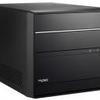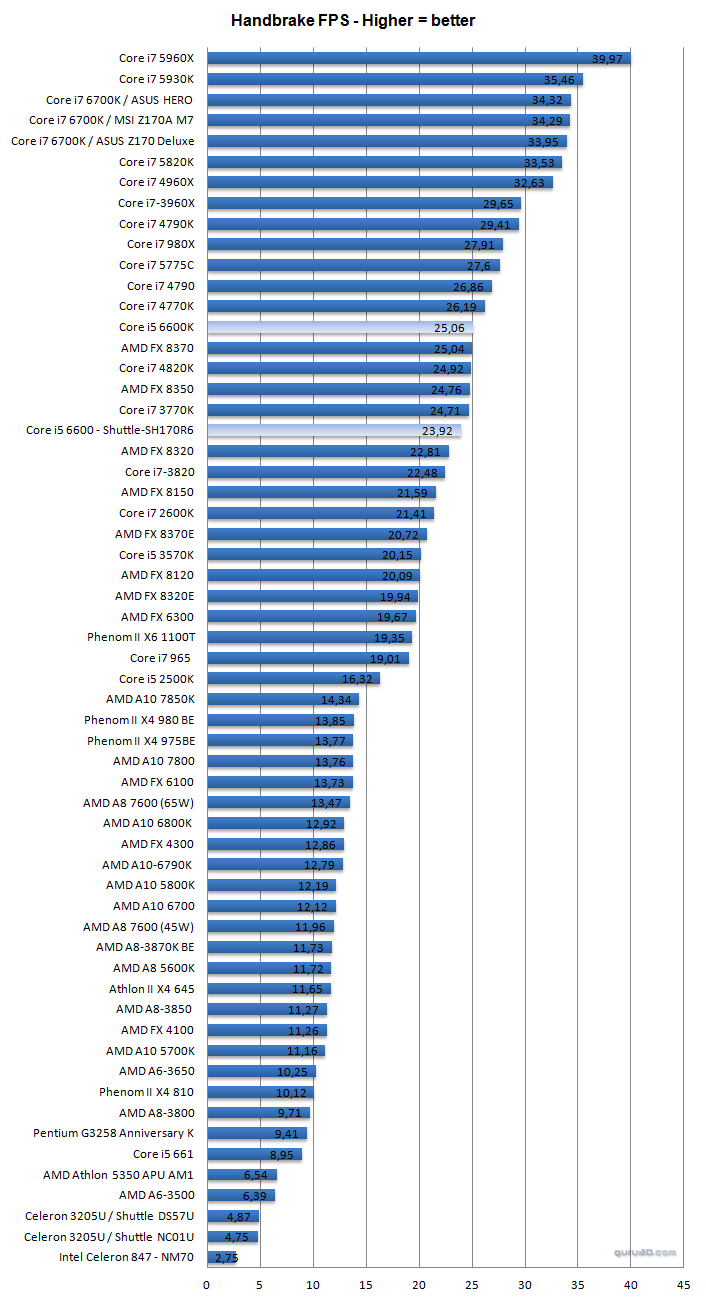Performance Processor: Content Creation and transcoding
Processor performance: CineBench 11.5
CINEBENCH is a real-world cross platform test suite that evaluates your computer's performance capabilities. CINEBENCH is based on MAXON's animation software CINEMA 4D, which is used extensively by studios and production houses worldwide for 3D content creation. MAXON software has been used in blockbuster movies such as Spider-Man, Star Wars, The Chronicles of Narnia and many more. This test scenario uses all of your system's processing power to render a photorealistic 3D scene (from the viral "No Keyframes" animation by AixSponza). This scene makes use of various different algorithms to stress all available processor cores.
The Cinema 4D engine can use systems with up to 64 processor threads which makes it rather future proof and also excellent for multi-core processors. The test scene contains approximately 2,000 objects containing more than 300,000 total polygons and uses sharp and blurred reflections, area lights and shadows, procedural shaders, antialiasing, and much more. The result is given in points. The higher the number, the faster the processor. In these charts we show you several CPUs and platforms. Now we mostly test performance desktop processors, so please do keep in mind what segment of the market we are testing today okay? Obviously a 2 core low power Celeron isn't cutting edge performance.
You'll notice that the Shuttle Core i5 6600 performas a notch slower. The H170 chipset uses vert strick Turbo multipliers. For Z170 the manufacturers often tweak that multiplier a bit, which explains the overall performance increase.
Processor Performance: FryRender
FryRender is a benchmarking framework for everyone, not just for 3D users; anyone out there, from hardware integrators or hardware reviewers to die-hard gamers. Since its conception, FryRender has been designed with the aim of being the most muscled engine in its category. As a result, and after several years of intense development, FryRender's core doesn't let a single CPU cycle be wasted. Its routines have been written to be cache efficient, and to take the maximum advantage possible of the new multi-threading capabilities present in modern CPU architectures.
Being a highly-optimized and extremely math-intensive application (mostly in floating-point) which makes a very efficient use of the system's cache, we think that FryRender is the near perfect tool for measuring "how much brute computational power" a computer is able to deliver.
Video Transcoding: H.264 (DTS5.1) to x.264 AC3 5.1
Video transcoding is well suited for systems that have more CPU cores. Encoding/transcoding to x.264 format is one of the most intensive tasks a processor can perform. As such this is one of the better tests in the entire review. We encode a h.264 DTS 1080P trailer of 150 MB to Matroska x.264 with 5.1 channels AC3. It's compressed in such a way that you can play it back with Haali media splitter and/or FFDSHOW codecs. We use the Handbrake software suite which is multi-core aware... the more processor cores it sees, the faster it can and will transcode. This software is also a wonderful benchmark for CPU and memory testing. The displayed number is the number of frames rendered per second averaged out over the encoding process. The higher the number, the faster the performance is. It's exactly in applications like these where processors with more cores really shine as they are all utilized to the maximum.





